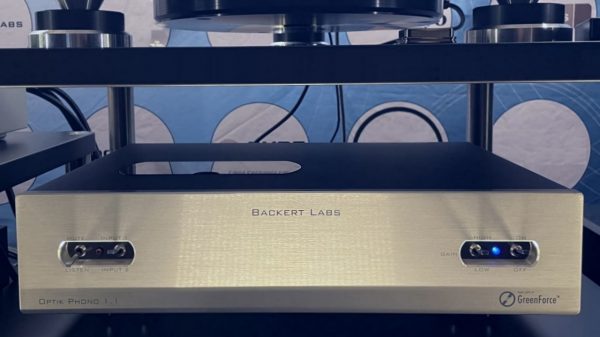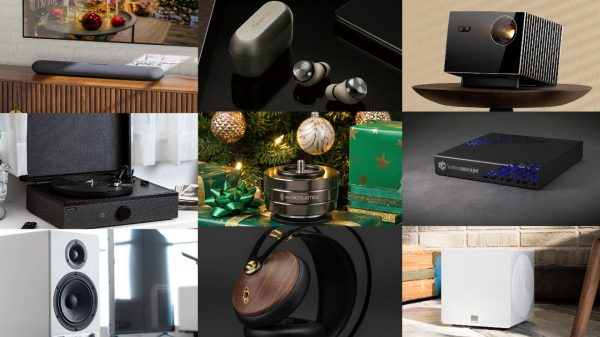Worldwide production of AQUOS LCD TVs passed the 10 million mark on May 31, 2006. This number was reached in the five years and five months since Sharp introduced the AQUOS as the “TV for the 21st century” in January 2001, and is the first in the industry for LCD TVs*1.
With broadcasting infrastructure rapidly switching from analog to digital, LCD TVs are now in rapidly increasing demand worldwide as the main TV for a new era of digital image entertainment. LCD TVs, which are perfectly suited to digital broadcasts, have not only overcome their screen size limitations; they have also rapidly improved in viewing quality performance factors such as moving image display quality and viewing angle.
The AQUOS has strived to create new markets, and today, it is meeting every possible need of consumers. The AQUOS has models ranging from 13V to 65V inches, a wide lineup not available with other flat-panel display TVs. It has also presented new ways to enjoy TV, such as introducing battery-equipped wireless models. And now the AQUOS includes full-spec HD models*2 that reproduce the rich, vivid colors provided by digital broadcasts in almost lifelike quality.
The latest chapter in the AQUOS story begins this fall with the scheduled start of operations at Kameyama Plant No. 2. Using eighth-generation glass substrates (2,160×2,400 mm), the plant boasts first-of-a-kind manufacturing processes and materials. Kameyama Plant No. 2 will allow Sharp to secure a stable supply system to respond to rapidly growing worldwide demand for large 40V-inch-class and 50V-inch-class LCD TVs.
As the leading LCD TV manufacturer, Sharp will continue to give consumers what they want: LCD TVs that offer superior environmental performance such as energy efficiency and a long service life, and the bright, high-resolution, beautiful images the world has come to expect from Sharp.
*1 For stationary LCD TVs 10.4 inches and larger, as of May 2006. Sharp data.
*2 A resolution of 1,920 H x 1,080 V pixels (2.07 million pixels) is capable of reproducing 100% of the HDTV signal format (1080i). Compared to conventional wide XGA panels (1,366 H x 768 V pixels), full-spec HD panels have twice the resolution, thus providing detailed, overwhelmingly beautiful pictures.
History of Model Introduction of Sharp’s AQUOS LCD TVs
Date of Introduction
January 2001
C1 Series, first AQUOS product launch
LC-20C1
LC-15C1
LC-13C1
August 2001
Side-speaker style; equipped with PC card slot
LC-20B1
LC-15B1
LC-13B1
November 2001
30V-inch digital high-definition LCD TV equipped with BS digital tuner, an industry first*3
LC-30BV3
November 2002
“Memo Recording” feature, allowing users to record to a memory card while watching TV
LC-20B3
LC-15B3
LC-13B3
November 2002
37V-inch BS/110°CS digital high-definition LCD TV featuring 37V-inch high-definition LCD panel
LC-37BT5
LC-37BD5
May 2003
Wireless LCD TV with built-in battery and SmartLink connectivity
LC-15L1
June 2003–
Terrestrial/BS/110°CS digital high-definition LCD TVs equipped with terrestrial digital tuner, an industry first*3
LC-37AD1
LC-37AD2
LC-30AD1
LC-30AD2
February 2004–
Terrestrial/BS/110°CS digital high-definition LCD TVs, first products produced at the Kameyama Plant
LC-37GD1
LC-37GD2
LC-32GD1
LC-32GD2
LC-26GD1
LC-26GD2
August 2004
45V-inch digital high-definition LCD TV, featuring full-spec high-definition LCD panel, an industry first*3
LC-45GD1
August 2005
65V-inch digital high-definition LCD TV, the world’s largest*3, featuring full-spec high-definition LCD panel
LC-65GE1
October 2005
37V-inch full-spec high-definition LCD TV, an industry first*3
LC-37GE2
December 2005
57V-inch full-spec high-definition LCD TV, an industry first*3
LC-57GE2
*3 At time of sale; Sharp data.
The AQUOS name concept is derived from the combination of words “aqua” and “quality,” evoking the image of the fluidity of liquid crystal materials. Sharp named its series of LCD TVs “AQUOS” to symbolize a 21st century television that offers both performance and quality befitting Earth, the beautiful planet of water we dwell on.























